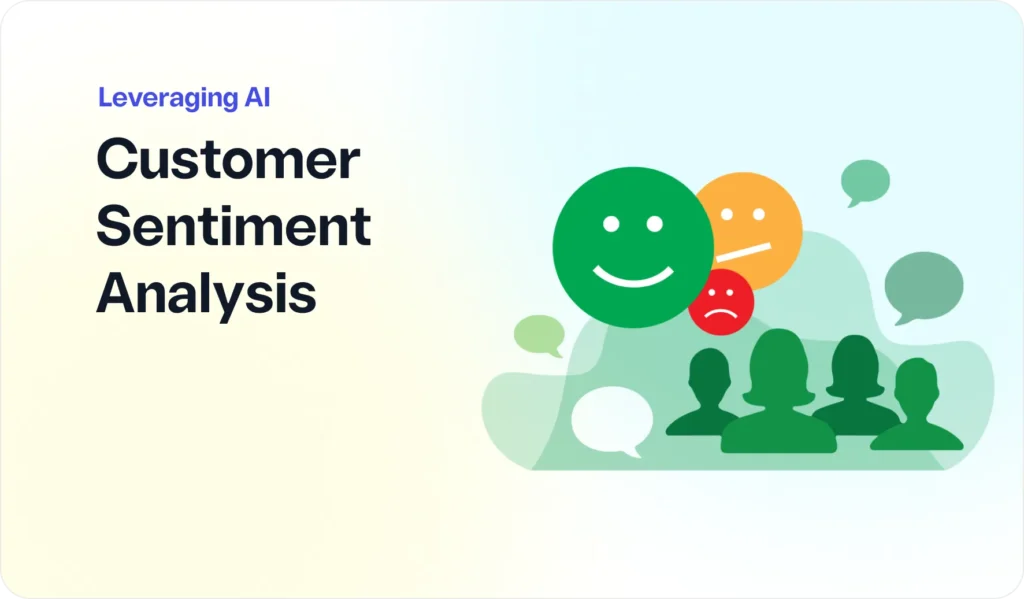Understanding customer sentiment is crucial for the success of any organization. The emotions and opinions expressed by customers can provide invaluable insights into their preferences, needs, and experiences. By leveraging customer sentiment analysis, businesses can gain a deeper understanding of their target audience, enabling them to make informed decisions that enhance customer satisfaction and drive growth.
Customer sentiment analysis involves the use of advanced technologies and data analytics to assess and interpret customer feedback from various sources, including social media, online reviews, surveys, and customer support interactions. Through this analysis, businesses can gauge the overall sentiment of their customers, identifying trends and patterns that reveal what customers truly think about their products and services.
Transforming Feedback into Actionable Insights
The primary goal of customer sentiment analysis is to transform raw feedback into actionable insights. By systematically collecting and analyzing customer opinions, businesses can identify key areas for improvement. For instance, if customers frequently mention issues with a specific product feature, organizations can prioritize enhancements to that feature during their next development cycle. Conversely, positive feedback about a particular aspect of the product can be highlighted in marketing materials to attract new customers.
Furthermore, sentiment analysis can help businesses track changes in customer sentiment over time. A sudden shift in sentiment may indicate that a newly launched product is not meeting customer expectations, while consistent positive feedback can affirm the effectiveness of recent marketing campaigns. By keeping a pulse on customer sentiment, businesses can make timely adjustments to their strategies, ensuring they remain aligned with customer preferences.
Enhancing Customer Experience
In a highly competitive market, delivering an exceptional customer experience is essential for retaining existing customers and attracting new ones. Customer sentiment analysis provides businesses with the insights needed to elevate their customer experience. By understanding the emotional drivers behind customer feedback, businesses can tailor their offerings to better meet the needs of their audience.
For example, if sentiment analysis reveals that customers value personalized service, a business can invest in training its staff to provide a more customized experience. Additionally, if customers express frustration over long wait times, organizations can streamline their processes to enhance efficiency. By proactively addressing customer concerns, businesses can foster loyalty and turn satisfied customers into brand advocates.
Guiding Product Development
Customer sentiment analysis plays a pivotal role in guiding product development. By analyzing customer feedback, businesses can identify gaps in the market and innovatively respond to emerging trends. For instance, if sentiment analysis highlights an increasing demand for sustainable products, a company can invest in developing eco-friendly alternatives to meet customer expectations.
Moreover, sentiment analysis can also inform product testing and launch strategies. By gauging customer sentiment during beta testing phases, businesses can determine which features resonate well with their audience and which ones need refinement before a full-scale launch. This iterative approach reduces the risk of product failure and increases the likelihood of successful market entry.
Informing Marketing Strategies
Marketing strategies that resonate with customers are vital for success. Customer sentiment analysis provides businesses with a wealth of information about their audience’s preferences, enabling them to craft targeted marketing campaigns. By understanding what customers love or dislike, businesses can create messaging that speaks directly to their audience’s emotions.
For example, if sentiment analysis reveals that customers appreciate authenticity in branding, businesses can emphasize their genuine values and commitment to quality in their marketing efforts. Additionally, sentiment analysis can help identify the most effective marketing channels and content types. By knowing where their audience spends their time and what type of content they engage with, businesses can allocate resources more effectively, maximizing their marketing ROI.
Monitoring Brand Reputation
In the age of social media, a brand’s reputation can change rapidly based on customer sentiment. Negative reviews or comments can have a significant impact on a business’s image and bottom line. Customer sentiment analysis empowers organizations to monitor their brand reputation continuously. By tracking mentions of the brand across various platforms, businesses can identify potential issues before they escalate.
For instance, if sentiment analysis indicates a surge in negative sentiment during a specific time frame, businesses can investigate the root cause, whether it’s related to a product flaw, customer service issue, or external factors. By addressing these concerns promptly, organizations can mitigate reputational damage and demonstrate their commitment to customer satisfaction.
Strengthening Customer Relationships
Understanding customer sentiment is essential for building strong customer relationships. By actively engaging with customer feedback, businesses can foster a sense of community and trust. When customers see that their opinions are valued and acted upon, they are more likely to remain loyal to the brand.
Sentiment analysis can also guide businesses in personalizing their communication strategies. For example, if a segment of customers expresses a desire for more educational content, a business can tailor its email marketing campaigns to include informative resources. By meeting customers where they are and addressing their specific needs, organizations can strengthen their connections and drive long-term loyalty.
Growth and Innovation
Incorporating customer sentiment analysis into business decision-making processes is no longer optional; it is a necessity for organizations seeking to thrive in a competitive landscape. By leveraging customer feedback to make informed decisions, businesses can enhance customer experiences, inform product development, guide marketing strategies, monitor brand reputation, and strengthen relationships. In an era where customer-centricity reigns supreme, those who harness the power of customer sentiment analysis will undoubtedly gain a significant advantage in the marketplace. As companies continue to prioritize customer insights, the potential for growth and innovation remains limitless.
